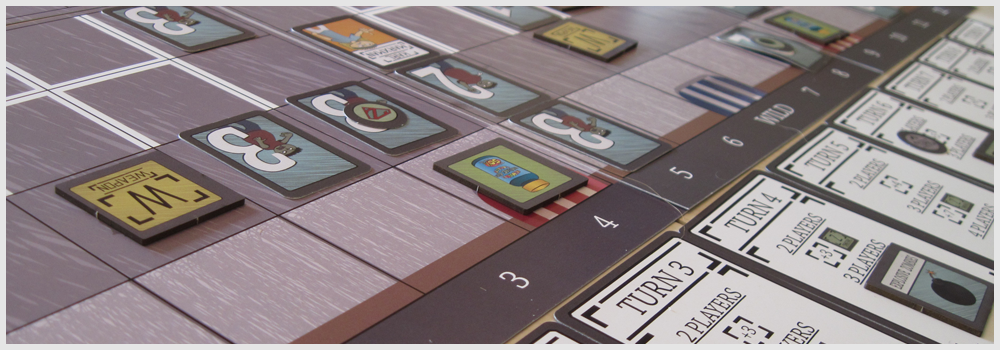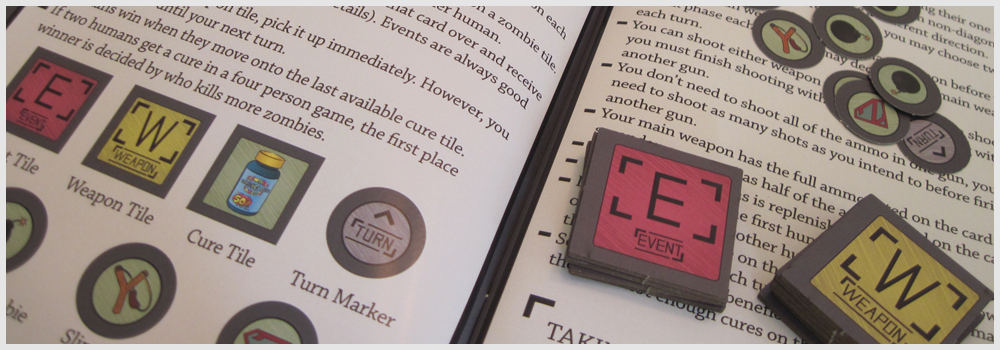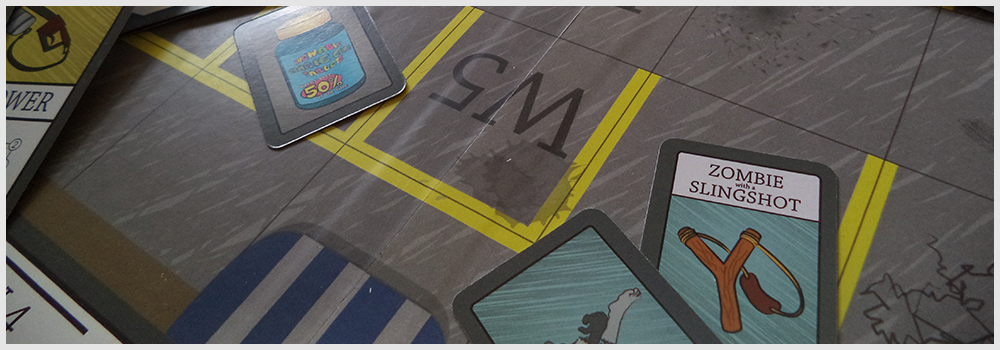ZORP (Zombie Oblivion Response Pack)
This is a casual strategy game designed to help introduce traditional board gamers to modern hobby games. I designed the game mechanics as well as the graphic design and user experience. Before it was published, the game was tested with nearly 200 players and received largely positive reviews from both regular players and professional reviewers alike.
UX Goals
1. Design board game sizing and dimensions while considering printing constraints.
2. Display game rules in a way that is accessible to multiple first time players.
3. Ensure that players can set up the board without referencing the manual each time.
4. Differentiate component materials and sizes to ensure simple interaction.
Tools: Paper-Prototypes, Illustrator, Photoshop, OpenOffice.
Process: Wireframe, Prototype, User Testing, User Interviews.
Design board game sizing and dimensions while considering printing constraints.
Goals:
- Board should enhance theme and support game mechanics.
- Board should adhere to standard/traditional board game sizes for storage.
Constraints:
- Minimize/Consider board game printing expenses while determining size and shape of board and components.
This is one of the most critical problems in UX design for board games, because every centimeter on the board correlates to a change in printing expenses and should serve a purpose in enhancing the theme of the game or supporting the mechanics of the game.
Not only that, but the board size plays an enormous role in the box size, and board game UX doesn't end when the game ends. It ends when the player fits their game box nicely back on their shelf.

Initially, I wanted the board to be the classic one-fold format because it is more familiar to traditional board gamers. It also needed to include a 12x13 grid where each tile was large enough to fit a weapon/event tile or a zombie token that clearly marked the type of zombie it represented.
I used a large, single-piece folded board for most of the development and testing period. Unfortunately, it required a large box, which not only compounded the printing costs, but it also generated concerns from players that it may not fit on their gaming shelves very well. Eventually I opted for a board made of nine pieces that players arranged themselves.
This was less familiar to many traditional board gamers, but the reduction in printing costs and box size was considerable. I also marked the back of each piece clearly in order to minimize confusion during set up.
Display game rules in a way that is accessible to multiple first time players.
Goals:
- Manual should not be a daunting size while still conveying all necessary information.
- Multiple players can reference weapon and event details at once.
Constraints:
- Language/instructions needs to be clear, consistent and concise on the manual and reference cards.
Board game rulebooks can be daunting, so I wanted to ensure that the manual was as short and foolproof as possible. Many traditional board gamers groan at the sight of a thick rulebook and not every gaming group contains a instructions-enthusiast.

Because some players have a tendency to refer to the game components while learning a new game, others do not, I needed to observe both groups of players. I had some players read the manual with the game board present while I had other players read the manual in its entirety before being exposed to the game board. After both groups were finished with the manual, I had them play the game and answer questions about the clarity of the manual.
To help reduce the possibility for information overload in the manual, I displayed all the weapon, event, zombie event and zombie type specifics on reference cards that could be passed around from player to player as the main instructions were being read. Also, different players had a tendency to remember different cards throughout the game. This made it easy for players to hold on to or pass around the cards they had the most difficulty remembering.
Ensure that players can set up the board without referencing the manual each time.
Goals:
- Board should have clear, thematic indicators showing where to place weapons/events for a recommended set up with a distinction showing how the setup changes with the number of people playing.
- Board should provide a template for how to set up randomized weapon/event placement.
Constraints:
- Board should not have excessive text and numbers that don't support the theme.
Players don't want to play on a board that's loaded in instructional indicators. Neither do they want the board to give a sense that it is encouraging a specific mode of play, be it recommended weapon/event placement or randomized placement. Lastly, to appeal to casual gamers, I didn't want them to have to arrange the board pieces (or use separate board pieces) depending on the number of people playing the game.

Because I chose a parking lot as the setting; cracks, oil stains and skid marks were used to indicate the recommended weapon/event tile placement in order to simplify the setup process. I added clear alternating “E's” and “W's” on the side of the board to help players identify weapon rows and event rows. I used the sidewalk to indicate the barrier in which the zombie player was not allowed to initially place zombies during the board setup. Finally, I used awnings to indicate where cures would be placed.
Differentiate component materials and sizes to ensure simple interaction.
Goals:
- Allow players to distinguish the purpose of a component by its material type.
- Ensure that shuffling and moving components is easy.
Constraints:
- Minimize/consider cost of printing as well as excessive component variety.
Because the number of zombies in the game grows pretty significantly, players need to be able to shuffle and handle the large stack of zombie tokens easily. Additionally, since zombies can lurk on top of weapon and events, they need to be distinct from the weapon/event tokens so that players can easily distinguish the purpose of a component.

I chose to keep the characters and zombies on small cards made with playing card material. This made it easy to shuffle and draw a random zombie type from the stack.
I had the weapons/event tiles printed on thicker chit board in order to make a clear distinction between them and the character/zombie cards. Players also reported that the heavier weight on the tiles made the experience of revealing their new weapon/event more satisfying.








